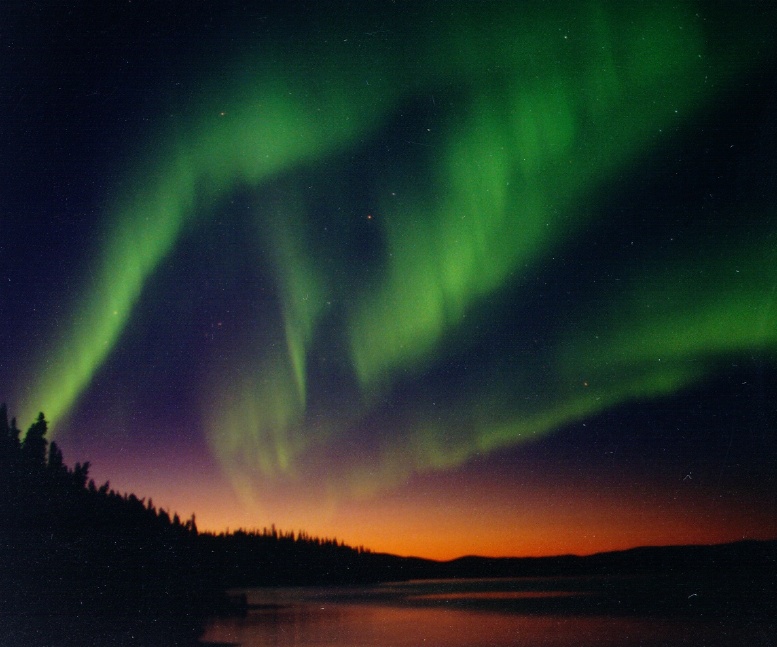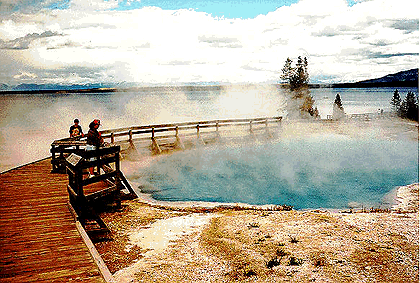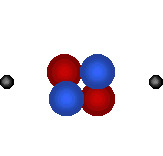
A plasma is a gas that contains electrically charged gas particles. It is said to be ionized. It can glow and shimmer, as for example the bright, pink haze in neon tubes [image: neon sign that flashes "Eat at Joe's"] or the brilliant Aurora Borealis (or Northern Lights) sometimes visible in the night sky near the north or south Pole.
 |
| |
A gas is made up of a lot of tiny, little particles called molecules. [Image: movie of swarming particles indicating the motions of a gas] Each molecule is too small to see with the naked eye, and is made up of just a few atoms. Examples of gases are
 |
 |
| |
|
The atoms and molecules in a gas are made up of electrons, protons and neutrons. The number of electrons in an atom always equals the number of protons in an atom. The number of neutrons, however may be different from the number of electrons or protons. Electrons, protons and neutrons have different physical properties. The most important one is that electrons carry one negative electrical charge, while protons carry one positive electrical charge. Neutrons do not carry any charge at all.
 |
| |
The Animation on the right shows a helium atom, i.e. one of the atoms contained in helium balloons. It consists of two protons (red), two neutrons (blue) and two electrons (grey) which circle around the protons and neutrons. The protons and the neutrons in the center make up the nucleus of the atom. You may now ask what keeps these different particles in an atom or molecule together. Under normal circumstances, the electrons cannot escape from the atom since positive and negative electrical charges attract each other and therefore electrons get pulled toward the protons. The protons in the nucleus, on the other hand, have the same charge on them and tend to repel each other. As a consequence the nucleus would break apart. This is prevented by the neutrons (which have no charge) and act as a sort of nuclear glue, holding the protons, and thus the nucleus, together.
Since each molecule in a gas has the same number of electrons and protons they also carry the same number of positive charges and negative charges. We say that the molecules are not charged or neutral. A neutral gas, i.e. a gas that consists entirely of non-charged molecules cannot conduct electricity because electricity is generated by the movement of charged particles, i.e. either electrons or positively charged molecules.
If the gas becomes very hot, like in the Sun,the attraction between the protons and the electrons is reduced to such an extend that it becomes possible for an atom to loose one or more electrons. If this happens the gas contains two types of charged particles, namely negatively charged electrons and positively charged atoms or molecules. A gas that contains charged particles is called a plasma. If these charged particles are moving around they give rise to electrical currents and therefore a plasma conducts electricity. In other words, a plasma is a collection of charged atoms or molecules, which has similar properties to those of a gas but differ from a gas in being a good electrical conductor. An important consequence of this is that the plasma also becomes susceptible to magnetic fields since electric currents and magnetic fields are physically closely related.
[IF SOMEBODY HAS A PICTURE OF A BOILING POT OF WATER PLEASE LET ME KNOW. COULD NOT FIND ONE!!! ALSO LOOKING FOR A MOVIE OF SWARMING PARTICLES. ARE PICTURES AND ANIMATIONS REFERENCED?]